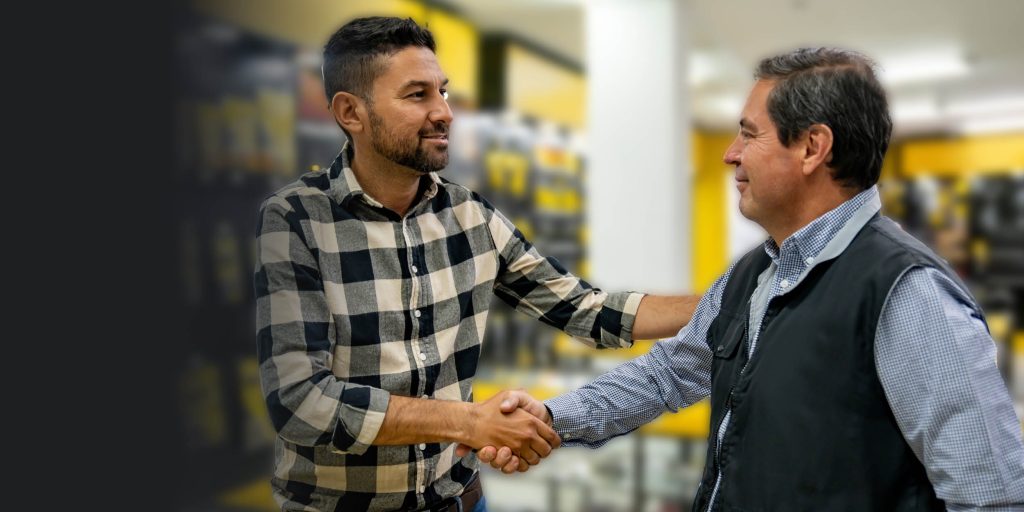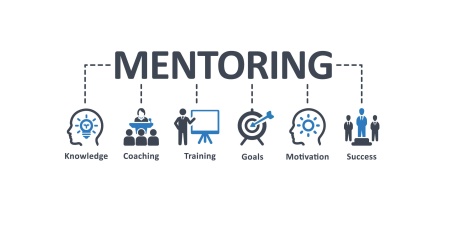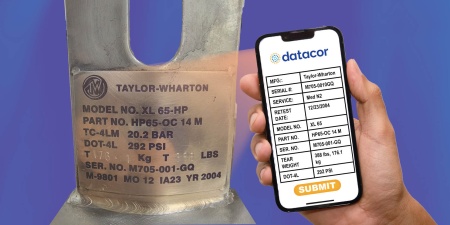I am a DISTRIBUTOR. I distribute “stuff!” The only reason I exist is because people who manufacture “stuff,” can’t be on every doorstep, eye-to-eye, nose-to-nose with everyone who might want, need, or use their “stuff.” I am hired to carry the manufacturer’s message.
I earn my spot in the supply chain. I advertise the manufacturer’s stuff. I promote it, explain its features and benefits, install it, train the client’s team in its use, service or repair it, inventory locally all the parts and disposable SKUs necessary to keep it operating and upgrade it as new improvements surface. Not only do I represent the manufacturer’s value to the client, but I carry inventory across the street from the client, carry the receivable, give the manufacturer economic replenishment orders, and pay his bill promptly. And, YES, I develop a relationship with the client, participate in his community, and see his family in Church and on the soccer field. I am the “local face” of the manufacturer.
My role never changes, but the application of my skills that new and changing technologies drive has me facing new challenges that I must learn and perfect every day. I live in the middle of this “supply chain chaos” and understand that the next disruption is right around the corner. We have become “seasoned veterans” of disruption management and accept the next challenge.
Disruption comes in at least two flavors. The first is external. Technology and productivity improvements that manufacturers develop and clients’ demand.
The second is internal – things we must, as a company, change to keep us sound financially and a viable and valuable partner to both customer and supplier. If we must prioritize our “discomfort” exposures, we will first focus on our unfamiliarity with the rapid rate of change in digital ecommerce relationships. They are sweeping, and impact so many things we always bundled into our “relationship selling” approach. The mouse now resolves so many things we used to discuss face-to-face – or, at least, with a phone call.
Today, these “conversations” are between two ERPs – and we were not prepared for that. Our “out of channel” competitors, industrial supplies distribution companies in many of the MRO and Safety disciplines, are already connected digitally with our clients. They can easily pick our pockets in furnishing a whole spectrum of hard good type SKUs. The competitors announced “go to market strategy” include expanding their respective offerings to include an even deeper dive into our product specialties.
NOT SO FAST! We may be slow, but we are not dumb. Through incredible collaboration between a few of our Program Systems partners, we have API integrated Platforms that connect us with our channel partners’ ERPs. We can now play in those “BIG BOY” games. Not only can we manage “stuff” packaged in cardboard boxes, but we can thoroughly manage our “specialized packaging”; cylinders, tanks, AND the logistics particular to their most efficient utilization, movement, and accountability. Further, our CONTENT affiliate has provided incredible imagery, articulated attributes, animation, and configuration, all syndicated – a research and identification tool that permits users to order the most complicated gases mixtures in confidence.
Our customer base, who, for many years have preferred to use single sources for the blend of gas/cryogenic products with associated hard goods, can expect our digitized version of the relationship to leave nothing unturned in exceptional experiences.
The path to success towards digitized relationships for the independent Gases and Welding Distributor has a proven template. The ownership will have to be unequivocally committed to adjusting to ecommerce technology. They will fund these changes without reservation, and they will find the specialized talent to CHAMPION the process across every touch point in the organization.
Embracing technology that enables full participation in the world of digitized commerce also opens the door to the endless horizons of Artificial Intelligence. While AI will be overwhelming in so many ways, there is at least one unique opportunity that will benefit both the user and owners of pressurized gases and cryogenic fluids. There is so much DATA already harbored in the ERPs deployed by this industry segment, driven by telemetry, that asset accountability, logistics, conformance, utilization, and transactional information, that reliable predictive analytics is at our fingertips.
Users will benefit in knowing that telemetry measuring contents, pressures, liquid levels, and temperatures provides all the data necessary to power automatic replenishment algorithms that become the backbone of predictive analytics. With these tools, vendor management of gas products can match those being used to drive VMI of all sorts of SKUs. Additionally, users will know the quantities and locations of the cylinders they have in use and will be able to easily reconcile invoices covering their use. In those instances where certifications and other documentation are conformance required, all such current data will be immediately available, accompanying each transaction.
Owners of these cylinder and container assets will know exactly where each asset is physically located. The life cycle of each asset will be known. Manufacturing history, required re-testing compliance, documented maintenance and repair events, and disposal will all be captured for each specific asset. Further, the owner will know exactly how utilization is occurring. No one wants these assets sitting idle, gathering dust in fill rooms, dock inventory, third party testing and repair facilities, or surplus cylinders riding around on truck beds. They need to be in user service, earning a return on the investment. That will guide his future investment decisions, allowing prudent use of resources.
Now that we have re-configured our business to not only survive, but thrive in a world of digital distribution, we will need to examine the ways other technologies are impacting the products and services we are providing to our users. As distributors, much of that will be determined by matching the needs of users with the products of the manufacturers we represent.
In today’s atmosphere, it comes down to one simple description – AUTOMATION!
Many of today’s manufacturing, fabricating, construction, and production trades are experiencing shortages in skilled labor. We know that – we, too, are having trouble filling and retaining skilled people to power our business. Accordingly, businesses everywhere will AUTOMATE as many processes as practical.
Robotic processes – complicated and simple – are being deployed as quickly as possible. Some elaborate systems – full cells – handle and position material, cut, weld, braze, grind, polish, disengage, and package without the touch of a human hand. Some are simple, tabletop, single-function Cobots, still completing a recurring task with accuracy and duplication, with little or no human interaction. Robots and Cobots come to work every day – on time – neither sick nor asking for time off. No college professor has told them they are “entitled,” OK to be pajama clad, working from their parents’ basement, sipping a latte.
For a number of years, Gases and Welding Distributors have been involved in automation, but generally providing only the tip of the spear. Automation equipment suppliers would buy MIG or TIG torches to integrate into delicate systems or cells.
In recent years, forward looking distributors have partnered with some suppliers to become more fully engaged automation design and process solutions firms. It has resulted in partnerships where Gases and Welding distributors are now integral with processes recognition, system designs, software solutions integration, installation, and user training.
While much of this is focused on the hardware side of automation, Gases and Welding Distributors are well equipped to “automate” the gases services provided to their users. They approach it as “just another utility service.” No different than the water line coming in from the street, the electricity from the nearby power pole, and the natural gas line feeding the HVAC system. Gases systems originate with the appropriately sized storage system – bulk and/or manifolds; vaporization, riser and distribution piping, valves, safety devices, and outlets. COVID has taught us to prepare for the unknown. Who will forget that vaporization, pipe sizing, volume and pressure drop issues would starve hospital oxygen systems to where patient rooms on hospital upper floors and distant wings became unusable in treating patients requiring COVID-related high flow therapy oxygen.
I have been called by many names through my sixty years in the “middle” of The Supply Chain – Jobber, Agent, Wholesaler, REP, and, of course, DISTRIBUTOR. It’s fair to say that our company has EVOLVED! We will continue to hold and enhance our place in the supply chain if we match our suppliers’ product and processes development with our customers’ needs and do it in an atmosphere of operational excellence. We will accomplish this by our disciplined reliability on Continuing Improvement. In so doing, we will fulfill the needs of our trading partners while enriching the lives of our associates and stakeholders. Yes, we can indeed be part of a true WIN, WIN.









